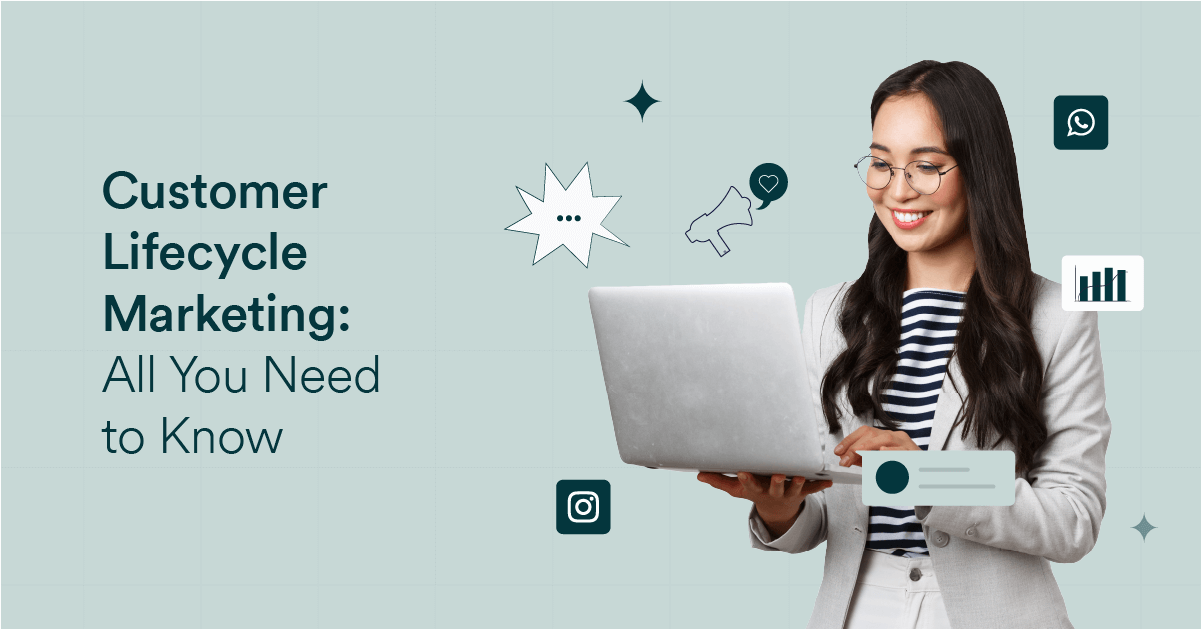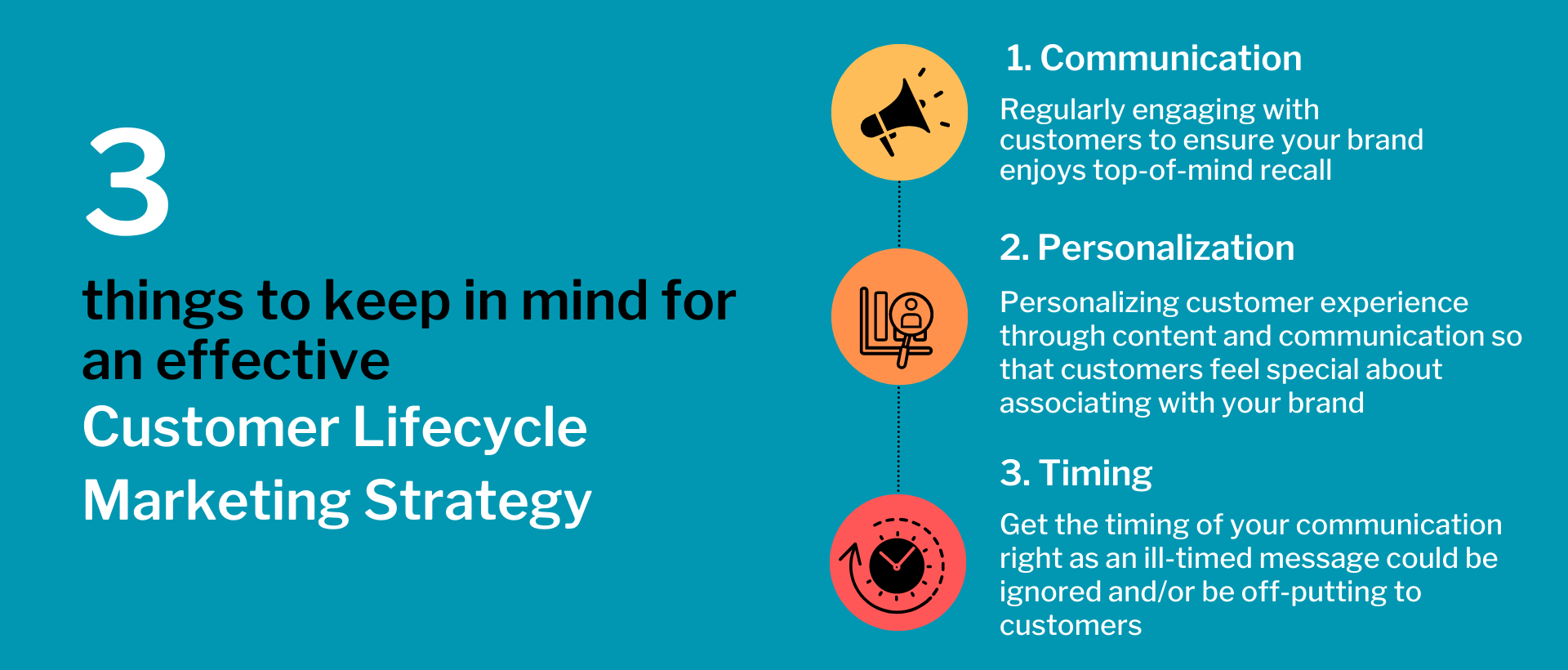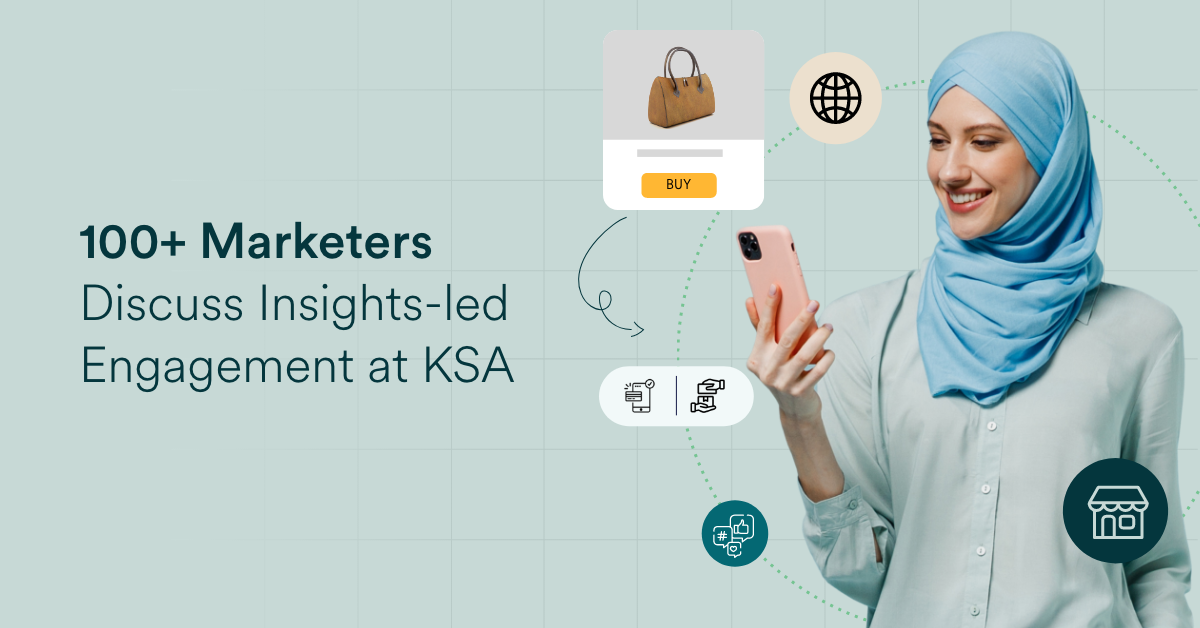Customer Lifecycle Marketing: All You Need to Know
Planning, strategizing, and personalizing of customer experience is called customer lifecycle marketing (CLM). Today the customer is not just paying for a winning product but also for the overall experience of associating with a product/brand. To start building a memorable customer journey, you must first map the various stages of the customer lifecycle with the brand and concentrate marketing efforts to engage with your customers at each stage.

What’s your favorite app?
Go ahead, take your time. Did you think of one? Or are there too many?
Ok, let’s make this easier. What’s your favorite app for
- ordering food
- booking a cab
- booking for a flight or hotel
- buying a phone
- buying clothes
- buying groceries
- online payment
- health and fitness
I bet you have a go-to app for, if not all, at least some of these activities. You don’t have to think about which one because your fingers automatically tap that little icon on your phone. It’s second nature to you.
When that happens, know that an entire industry is behind this, working tirelessly, planning, strategizing, analyzing your behavior, and ensuring a personalized, memorable customer experience that leaves you feeling good about yourself.
Now, let’s flip it. As a product owner, growth marketer, CRM, etc., do you look at your customer’s lifecycle with your product the same way?
This planning, strategizing, and personalizing of customer experience is called customer lifecycle marketing (CLM).
What Your Customer Wants
To begin with, let’s look at what your customers want.
Today the customer is not just paying for a winning product but also for the overall experience of associating with a product/brand.
Further, customer satisfaction and happiness also depend on the following –
- The frequency of your communication – Regular communication to facilitate easy customer recall
- Offers and discounts – Discounts and other perks such as early bird access, exclusive access, etc. should be offered to existing and new customers.
- Good quality and relevant content and personalized messages
All these factors are vital in determining whether a customer will choose your product or go with a competitor.
We now live in a world of hyper-exclusivity and niches. Everybody wants their place in the sun, as do you and your brand.
You can build that niche for yourself by creating a unique customer experience that fully engages the customer at every step of their journey with you.
To start building a memorable customer journey, you must first map the various stages of the customer lifecycle with the brand and concentrate marketing efforts to engage with your customers at each stage.
Customer Lifecycle and Customer Lifecycle Marketing
The 7 Stages of Customer Lifecycle

Customer lifecycle marketing (CLM) refers to a series of activities that a business undertakes to engage with customers at various stages of the lifecycle, starting with the discovery of your product by a customer to the customer becoming a loyal brand ambassador.
“CLM, in a nutshell, is about understanding customer lifecycle and applying marketing techniques to engage with customers at each stage of their customer lifecycle,” says Sagar Patil, a growth consultant, who has worked with retention marketing, CRM and product teams at brands like Flipkart and Jumia (UAE). He is also the Course Director for CELP – Customer Engagement Leadership Program – the flagship customer engagement course of hashgrowth.org.
According to him, the customer lifecycle and its many stages have always existed but what makes CLM different today is the one-on-one personalization of content and customer experience.
“Technical advancement and automation and AI have made it much easier to engage with the customer and create a personalized, highly-engaging experience,” he adds.
Planning a Customer Engagement Strategy
The first point to note when planning a compelling CLM strategy is that each customer lifecycle stage is unique. So the engagement techniques should be driven by the customer behavior within that lifecycle stage. Also, understand that within each lifestage customer behaviour will change based on their demographics, psychographics, preferences, etc.
Further, choose engagement channels (email marketing, WhatsApp/SMS campaigns, in-app messaging, and website notifications, among others) based on the nuances of the lifecycle stage and the customer behavior during that stage.
Engagement should be built through relevant content about your product, its value proposition, how it works, and its features, among others.
Channels You Choose
The channels you choose to communicate through such as email marketing, WhatsApp/SMS campaigns, in-app messaging, website notifications, etc., also matter. They can encourage or discourage customer response. The choice of the channel depends on the life stage of the customer, the timing of the message, and the channel preferred by the customer.
For instance, during the activation stage, sending a WhatsApp message at the appropriate time with a discount code on the first purchase is most likely to convert into a first-time purchase. Similarly, during the loyalty stage, sending mail campaigns with product recommendations (upsell or cross-sell) or in-app messages every time the customer logs onto the app for higher conversion.
Also, send personalized marketing messages at regular intervals by engaging marketing automation tools via well-executed campaigns. These can help build long-lasting customer relationships and chart a customer journey unique to each customer category.

An effective customer lifecycle marketing strategy should help improve topline by increasing each customer’s lifetime value (LTV). This is the average revenue generated by a customer during their entire period of association with the brand.
Building the Right Team
Before you get into planning and strategizing engagement with your customer, you need to plan the organization of your team well.
“Organize the team in such a way that no crucial stage of the lifecycle is missed out,” says Sagar.
Divide your teams based on different stages in the customer lifecycle. Don’t overburden one team with the responsibility of planning and strategizing customer engagement across various stages. This can be overwhelming as well as counter-productive as no single stage will receive the individual attention and focus it deserves.
Moreover, the organization of your team will also depend on the size of the company you are in, he adds.
“The idea is to set KPIs for each team and each stage, instead of combining them and having an overall goal. Make sure you use the right tactics to engage with customers at each stage,” Sagar emphasizes.
For a start-up or a small brand, acquiring customers should be top priority. So, all strategies must support onboarding and activation activities. As an SME, organize teams based on your priorities. Your strategies should support repetition and habituation, along with onboarding and activation. For an enterprise or large company, your focus will be on all seven stages, and the resurrection of churned customers.
Growth for brands today is unequivocally entwined with good customer engagement.
Every brand aspires to find a spot on the customer’s phone and be among the top-used apps. A good CLM strategy is a good place to start your brand’s journey towards reserving that spot.

